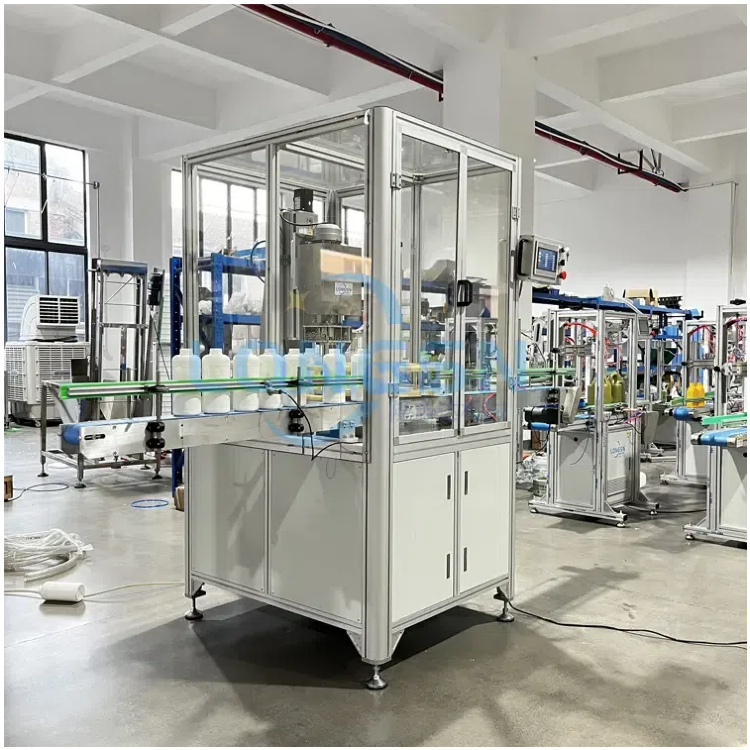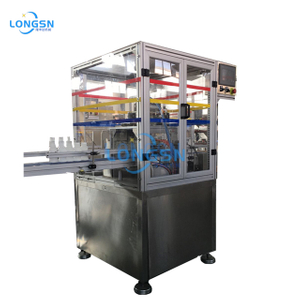Ensuring that bottles leaving the production line are flawless is a critical priority for any beverage or liquid packaging operation. Even a small defect in the bottle neck can lead to leaks, capping issues, and ultimately costly product recalls. Integrating a Bottle Neck Cutting Machine with a leak tester provides a proactive solution, allowing manufacturers to detect and correct potential defects before bottles are filled. Zhangjiagang Longsn Machine Co., Ltd., a leading professional manufacturer of bottle packaging machinery, offers advanced integrated systems that combine precise neck trimming with reliable leak detection, helping production lines maintain high quality standards while reducing waste and recall risks. Beyond simply trimming excess material, this approach represents a shift toward smarter, more efficient quality control that protects brand reputation and operational efficiency.
Understanding Common Leak Causes Beyond Trimming
Even the most precise trimming process cannot fully eliminate all potential leak sources. Recognizing the root causes of leaks helps manufacturers determine when integration with a leak tester is essential.
Mold Gate Holes, Pinholes, and Cracked Necks
Mold gate holes or tiny pinholes can occur during bottle molding and are not always visible during trimming. These small defects may result from slight inconsistencies in molding temperature or pressure, and they can compromise the structural integrity of the bottle neck. Cracks in the neck, often caused by uneven cooling, mechanical stress, or minor impact during handling, can also pose a serious leak risk. While trimming removes burrs and flash that might interfere with capping, these hidden structural issues require inspection by a sensitive leak detection system. By identifying these defects before filling, manufacturers prevent costly product waste and customer complaints downstream.
Burrs and Flash
Burrs and flash are the defects that trimming directly addresses. A Bottle Neck Cutting Machine precisely removes excess material, ensuring a smooth, uniform neck finish that promotes secure capping and consistent sealing. However, trimming alone cannot guarantee the absence of internal or microscopic defects. Integrating a leak tester ensures that both surface imperfections and hidden structural issues are detected, offering a dual layer of protection against leaks.
Impact on Production Efficiency
By addressing both visible and invisible defects, integrated trimming and leak testing reduce line stoppages caused by faulty bottles. Operators spend less time manually inspecting bottles, and production flow remains consistent, leading to higher throughput and improved overall efficiency.
Architectures for Integrated Trim and Leak Workflows
Integrating trimming and leak testing requires careful workflow design. Several architectures are available to optimize quality control without slowing down production.
Inline Integration vs Turntable Systems
Inline integration positions the leak tester directly after the trimming station, allowing bottles to move seamlessly from cutting to inspection. This setup minimizes handling and reduces the chance of contamination. Turntable or rotary systems, in contrast, can handle high-speed production lines efficiently by synchronizing multiple bottles for trimming and testing simultaneously. This method is especially useful in lines where production volume is high, and space optimization is crucial. Manufacturers can select an architecture that balances speed, accuracy, and ease of maintenance, depending on their operational priorities.
Synchronous Reject Systems
An effective integration requires a synchronized reject mechanism. If a bottle fails the leak test, the system immediately diverts it from the main line, preventing defective products from continuing downstream. Synchronous reject systems ensure that trimming and testing actions are tightly coordinated, improving traceability and minimizing manual intervention. Advanced systems can log each rejection event, providing data for quality audits and production optimization.
Optional Integrated Leak Testing Suppliers
Suppliers like Zhangjiagang Longsn Machine Co., Ltd. offer Bottle Neck Cutting Machines with optional integrated leak testing modules. These modules are designed to retrofit existing trimming lines or function as part of a fully integrated production system, allowing manufacturers flexibility in upgrading their quality control processes without a complete overhaul. Integration can be customized to line speed, bottle type, and production capacity, ensuring that each facility benefits from the maximum possible defect detection.

Leak Test Types That Complement Trimming Stations
Selecting the right leak testing method is key to maximizing the effectiveness of an integrated system. Different tests are suited to various bottle materials, contents, and production requirements.
Pressure Decay Testing
Pressure decay testing detects leaks by pressurizing the bottle and monitoring pressure loss over time. This method is highly sensitive to small leaks and works well with a range of plastic and glass bottles. When paired with a trimming station, it provides immediate feedback on neck quality and integrity. The precision of this testing method is critical for high-value products where even minor leaks can lead to major losses.
Vacuum and Air-Pressure Monitoring
Vacuum testing and air-pressure monitoring are alternative approaches suitable for high-speed lines. Vacuum testing identifies leaks by drawing air out of the bottle, while air-pressure monitoring introduces air and detects escaping bubbles. Each method has strengths: vacuum testing is non-invasive and effective for fragile bottles, while air-pressure monitoring excels in speed and repeatability. Manufacturers often select the test type based on bottle material, product viscosity, and desired inspection sensitivity.
Limitations and Best Practices
Although leak testing is highly effective, it is not infallible. Extremely small micro-defects may escape detection, and different bottle materials may respond differently to pressure or vacuum methods. Regular calibration and adherence to sample rates are critical to maintaining test accuracy and line efficiency. Additionally, periodic verification against known defect samples ensures that the system remains reliable over long-term operation.
Real-World Benefits: Reducing Recalls and Waste
Integrating trimming and leak testing has tangible benefits in production efficiency and product quality. By detecting defects early, manufacturers can significantly reduce recall risks and minimize material waste.
Detecting Small Pinholes
Small pinholes often escape visual inspection and can lead to customer complaints or returned products. By combining a Bottle Neck Cutting Machine with a leak tester, these defects are identified before filling. This proactive detection reduces the volume of defective bottles and ensures that only bottles meeting quality standards reach the market. This is especially important in industries like beverages, pharmaceuticals, and cosmetics, where leaks can compromise product safety and brand reputation.
Quality Traceability and Rejected Part Handling
Integrated systems often include data logging and traceability features. Every rejected bottle can be tracked, including the reason for rejection. This traceability enables manufacturers to analyze defect patterns, optimize mold maintenance, and continually improve production processes. Moreover, integrating trimming and leak testing reduces the labor and operational costs associated with manual inspection and rework.
Environmental and Cost Advantages
By minimizing wasted bottles, caps, and liquids, integrated systems also support sustainability initiatives. Manufacturers reduce material consumption and lower energy costs associated with reprocessing defective products. The combination of quality assurance and efficiency translates into both economic and environmental benefits, aligning with modern manufacturing standards and consumer expectations.
Implementation Checklist and Commissioning Tips
For successful integration, several factors must be considered during installation and commissioning.
Synchronization, Sample Rates, and Alarm Logic
Ensure that trimming and leak testing operations are synchronized. Proper sample rates and alarm logic should be established to balance production speed with defect detection. This configuration ensures the system responds appropriately to quality issues without unnecessary line stoppages. Real-time monitoring dashboards can help operators quickly identify bottlenecks or abnormal defect patterns.
Operator Training and FAT Acceptance Criteria
Operators should be trained to understand the integrated workflow, handle rejected bottles, and interpret test results accurately. Factory Acceptance Testing (FAT) criteria should be established to confirm that the system functions as intended before full-scale production begins. Comprehensive training and testing reduce downtime, support consistent quality outcomes, and maximize return on investment.
Conclusion
Integrating a Bottle Neck Cutting Machine with a leak tester is an effective way to safeguard product quality, prevent leaks, and reduce recall risks. Zhangjiagang Longsn Machine Co., Ltd. provides professional solutions that combine precision trimming with advanced leak detection, ensuring your production line maintains high standards while minimizing waste. With these integrated systems, manufacturers gain higher operational efficiency, better traceability, and stronger assurance that every bottle meets quality expectations. To explore how our integrated solutions can enhance your production line and reduce risks, contact us today.

 English
English










